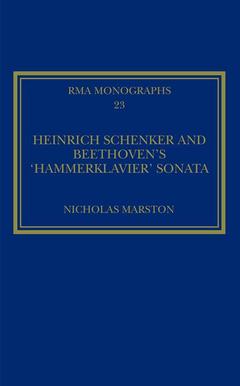In 1912 Heinrich Schenker contracted with the Viennese publisher Universal Edition to provide an 'elucidatory edition' (Erl�uterungsausgabe) of Beethoven's last five piano sonatas. Each publication would comprise a score, newly edited by Schenker and using the composer's autograph manuscript as principal source, together with a substantial commentary combining analytical, text-critical and performance-related matter. Four of the five editions appeared between 1913 and 1921, but that of the 'Hammerklavier' Sonata, op. 106, was never published. It has generally been assumed that this was simply because Schenker was unable to locate the autograph manuscript, which remains missing to this day. But as Nicholas Marston shows in a detailed history of the Erl�uterungsausgabe project, other factors were involved also, including financial considerations, Schenker's health concerns, and his broader theoretical ambitions. Moreover, despite the missing autograph he nevertheless developed a voice-leading analysis of the complete sonata during the years 1924-1926, a crucial period in the development of his mature theory of tonal music. Marston's book provides the first in-depth study of this rich analysis, which is reproduced in full in high-quality digital images. The book draws on hundreds of letters and documents from Schenker's Nachlaß; it both adds to our biographical knowledge of Schenker and illuminates for the first time the response of this giant of music theory to one of the most significant masterworks in all music.




